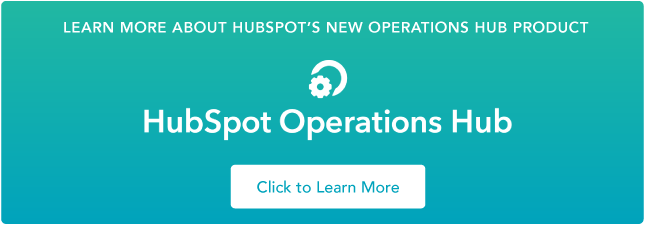Here's our guide to customer data that will walk you through everything you need to know.
Customer Data for Different Departments
Customer Data for Marketing
Marketing is where it all begins for your customer data. You're creating content and lead magnets that draw attention to your brand, using forms and other lead gen tools — like live chat — to convert those visitors to contacts, and nurturing those contacts to (hopefully) becoming sales-ready leads. Here's the customer data to collect for your marketing team
1. Name, Email, Business Name
Marketing is usually the department that brings in the highest proportion of new leads, which means the pressure is on to make that information valuable for the rest of the customer lifecycle.
This starts with basic contact data that should be smoothly organized in your CRM as well as synced two ways with other key apps such as your email marketing platform. This keeps all customer information up-to-date everywhere, ready for anyone in any department to locate the latest insights.
2. Website Engagement
At the early stages of a new lead's time with your business, it's important to make sure your website analytics enable you to understand how they are interacting with your business and how you can best deliver the experiences they're looking for.
If you're an e-commerce business owner, for example, you could use website activity to recommend other similar products each person might like via email or retargeting ads on social media.
3. Segmentation Data
Information that enables you to segment a contact into the right groups and lists is one of the most valuable types of data to collect early on. This can include data such as team size, industry, and role.
Not only can this data enable the most personalized messaging and automation, but it also helps you calculate lead score.
4. Subscription Preferences
In the very first form that a lead fills out on your website, make sure there's a clear checkbox for them to opt into marketing communications. This is a crucial part of data protection regulations, but it also enables you to send the most relevant content if you offer a range of options to subscribe to.
5. Lead Scoring
Lead qualification data such as lead scoring is one of the most impactful ways for marketers to help out their sales colleagues. With automated lead scoring in place, points are awarded for positive interactions and behavior and deducted for negative indicators. It's the fastest way to instantly assess how likely a prospect is to buy your product, and ideally starts as soon as a visitor converts to a lead.
Examples of Lead Score Boosters:
- High engagement, such as webinar signups and content downloads
- High amount of time spent on your website
- Visiting high-value pages, such as pricing pages, demo pages, and feature pages
- Identification as decision-maker
- High-value market or industry
- Adequate budget
- Team size matches personas
- Annual revenue matches personas
Examples of Lead Score Deductors:
- Very low engagement with website pages
- Not the decision-maker
- Market or industry you struggle to serve
- Inadequate budget
- Team size doesn't match personas
- Annual revenue doesn't match personas
Customer Data for Sales
Salespeople create and strengthen the bridge for interested leads to become happy customers, guiding each prospect to the right product or service. Whether your team works with an account-based approach for high-value deals or a more automated strategy that's effective at scale, customer data is crucial.
Here's the data that's most important for your sales team to collect.
1. Deal Information
For each closed deal, make sure you create a clear record of all information associated with it as soon as possible. This includes data such as billing amount and frequency, which you can easily sync from your CRM with your accounting app. It also helps to make sure there's an easily accessible copy of the latest version of the contract in your CRM.
2. Customer Lifetime Value (LTV)
Calculating a customer's lifetime value is a really useful metric to forecast long-term revenue. You can measure this by multiplying their purchase value by purchase frequency over your average customer lifespan. With a CRM that has calculation properties, you can keep this updated automatically for your active customers.
3. Information About Decision-Makers
Your salespeople get an unmatched view of how each client's company functions. This includes who is involved in the decision-making process.
As this same group of people will likely be involved in future onboarding sessions and upgrading discussions, make sure to store relevant information in your CRM. This helps avoid the awkward scenario of them remembering you while you look anxiously at a blank contact record, or passing the deal to a colleague who has even less background information.
4. Granular, Verified Segmentation Data
As a sales team gets to know a prospect better, it's a great opportunity to verify their contact record. Check that their industry, company size, and other key metrics are correct, and make sure to instantly sync this data to other apps such as email marketing and automation tools that use segmentation.
5. Closed Won and Closed Lost Data
One of the most important metrics for salespeople to collect is why they successfully close a deal or not. Ask for standardized answers to store in your CRM and use this to optimize your product, messaging and targeting, and sales process.
Customer Data for Customer Service
Customer data collection doesn't finish when a deal is closed. Throughout a customer's time with your company, you can optimize and update their contact record to create the most accurate view of how your company can best serve them. Here's the best customer data to collect for your service team
1. Customer Happiness Metrics
Metrics such as NPS (Net Promoter Score) and CSAT (Customer Satisfaction Score) are incredibly useful for any organization to reduce churn and optimize customer experience with a stronger product, strategy, and team. These metrics give you a snapshot of how a customer feels about your company at any point in time, and with repeated surveys at set intervals, you can monitor how that sentiment changes.
Many customer happiness metrics are extremely quick to collect. As one of the most popular examples, NPS simply asks: “On a scale of zero to ten, how likely are you to recommend our business to a friend or colleague?”
2. Support Ticket Data
An insightful way to gauge both individual and overall customer happiness is with your support ticket data. This includes general metrics such as ticket volume, topic, and time to resolution, but it's also worth automating data properties for each customer record, such as:
- Last ticket submitted
- Number of tickets submitted
With automation in your service team, you can create instant triggers that let your team know if satisfaction scores drop below a certain threshold or a certain amount of tickets are submitted within a given timeframe. Your team can then reach out to check how the customer is doing and reduce their likelihood of churn.
3. Churn Risk
By combining metrics such as customer satisfaction and support ticket data, you can create a tailored formula for calculating churn risk. With a calculation property in your CRM, you can then automatically measure this and keep an up-to-date and intelligent view of customers that are at the highest risk of churn.
4. Customer Churn Reason
It's unfortunate, but it happens: you can't keep every customer forever. If a customer does have to say goodbye, try to understand and record what's behind it in your CRM. Keep these answers standardized (such as "too expensive" or "problems with the product") so you can easily create actionable reports instead of sifting through unstructured data.
5. Customer Happiness Reason
On the other hand, if a customer loves your company, learn why! Create a standardized set of satisfaction reasons that you can ask your customers with high NPS scores to choose from.
Collecting, maintaining, and utilizing customer data is a job you're never finished with. But when you have relevant, accurate, and up-to-date customer data, you make everything else easier and more impactful for sales, marketing, service, and beyond.
To maintain the highest quality data in every app and enable your departments to seamlessly collaborate on insights, two-way contact data synchronization between your apps. From your CRM to your email marketing software and support platform, bring your apps together for the smoothest data-driven operations in your organization.
Marketing Data



![How to Nail First-Party Data Strategy According to a Google Director of Product Management [+ New Data]](https://53.fs1.hubspotusercontent-na1.net/hubfs/53/first-party-data-strategy.webp)

![6 Ways to Earn Trust From Consumers Who Share Data With Your Brand [Data]](https://53.fs1.hubspotusercontent-na1.net/hubfs/53/person%20shares%20data%20with%20brand.png)





![15 Stats Every Digital Publisher Needs to Know [SlideShare]](https://53.fs1.hubspotusercontent-na1.net/hubfs/53/Media/charts.jpg)
